You’ll want to select a device like Apple Watch or Oura Ring that monitors heart rate variability for early stress detection. Set up personalized alerts using your baseline measurements to trigger vibration or breathing prompts when stress levels rise. Establish daily mindfulness routines with guided meditation sessions to build your self-regulation skills. Track workplace patterns to identify specific triggers like meetings or deadlines that spike your stress responses. The insights below will help you master these techniques for lasting stress management success.
Choose the Right Wearable Device for Your Stress Monitoring Needs

Why settle for guesswork when managing stress? You’ll need the right wearable to track meaningful stress indicators like heart rate variability and skin temperature changes.
Smartwatches such as Apple Watch and Garmin offer extensive stress tracking with built-in biofeedback tools, while the Oura Ring provides discrete, accurate monitoring for 24/7 wear.
Budget-conscious users can rely on Fitbit Inspire 3 for solid stress metrics, whereas athletes might prefer Whoop 5.0’s recovery-focused analysis.
Consider practical factors like battery life—Garmin vívoactive 5 lasts 11 days for continuous monitoring.
You’ll also want water resistance and comfortable design for all-day wear. Understanding your personal baselines is crucial for interpreting stress data accurately and improving your overall stress management approach.
Set Up Personalized Stress Alerts and Biofeedback Notifications
Once you’ve selected your ideal wearable device, you’ll want to configure personalized stress alerts that actually help rather than overwhelm you.
Start by installing the companion app and directing yourself to stress management settings. Set your alert parameters using heart rate variability as your primary metric—it’s the most accurate for stress detection among commercially available options. Configure when you’ll receive notifications, choosing between vibrations, sounds, or visual cues based on your preferences.
Calibrate your device using baseline measurements, then test alert thresholds with simulated stressors to guarantee proper sensitivity. Modern devices can provide 5 types of distraction alerts to help you recognize different mental states and improve your focus skills throughout the day.
Enable biofeedback features like guided breathing prompts and personalize coaching messages for stress reduction exercises. Set frequency for wellness check-ins and adjust notification timing to match your daily routine for maximum effectiveness.
Establish Daily Mindfulness and Breathing Exercise Routines
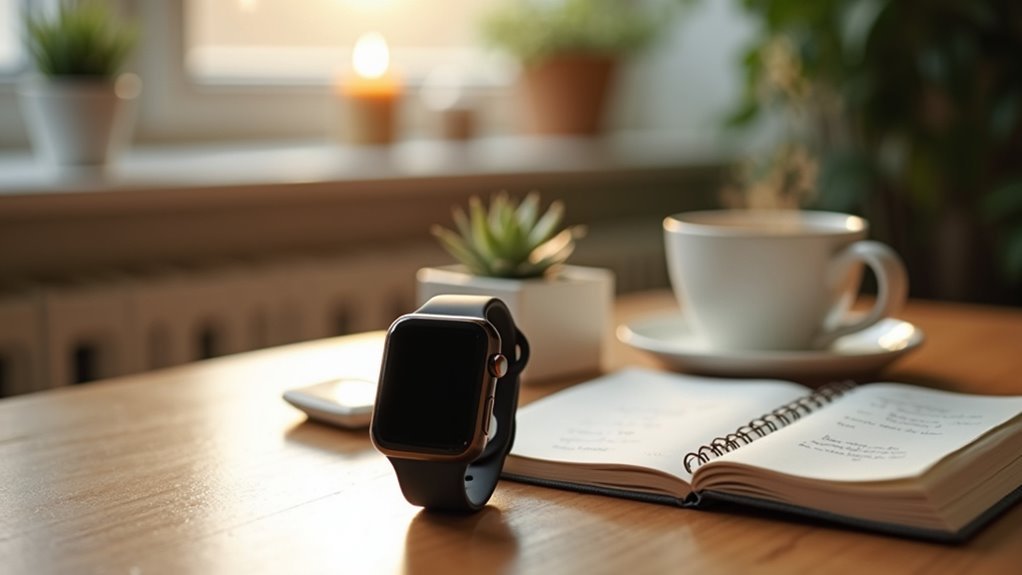
Now that your wearable device sends you timely stress alerts, you can leverage these notifications to build consistent mindfulness and breathing routines that create lasting change. Your device’s guided apps make daily practice accessible anywhere, transforming stress moments into growth opportunities.
| Technique | Your Transformation |
|---|---|
| Mindful Breathing | Lower blood pressure, calmer heart |
| Body Scan Meditation | Release physical tension, feel lighter |
| Guided Sessions | Build confidence, stay motivated |
| Sensory Awareness | Connect with your body’s wisdom |
| Daily Consistency | Experience lasting mood enhancement |
Focus on your breath’s natural flow while your wearable tracks physiological changes. Practice body scans to heighten awareness of tension spots. Use your device’s personalized programs to maintain engagement. Consistent daily practice regulates your autonomic nervous system, promoting better sleep and reducing anxiety. Research shows that even brief 3 to 10 minute meditation sessions during work can provide significant health benefits while maintaining safety and acceptability.
Track Your Stress Patterns to Identify Workplace Triggers
While your daily mindfulness routine builds resilience, your wearable’s continuous monitoring reveals the specific workplace situations that spike your stress levels in the first place.
By tracking heart rate variability, electrodermal activity, and other biometrics throughout your workday, you’ll discover patterns that weren’t obvious before. However, it’s important to understand that biometric devices may produce skewed results based on skin tone or body size, so consider these potential limitations when interpreting your data.
Your body reveals workplace stress patterns that your conscious mind misses through continuous biometric monitoring throughout each workday.
Your device can pinpoint exactly when stress occurs by correlating data with your activities:
- Meeting analysis – Identify which types of meetings or colleagues consistently elevate your stress response
- Deadline tracking – Spot how approaching deadlines affect your biometrics over time
- Location insights – Discover if certain work areas or times of day trigger stress spikes
- Task correlation – Link specific projects or responsibilities to your physiological stress markers
This data empowers you to proactively manage triggers.
Integrate Long-Term Self-Regulation Techniques With Real-Time Data

Beyond identifying your stress triggers, the real power emerges when you combine your wearable’s real-time alerts with proven self-regulation techniques you’ve practiced over time.
When your device detects escalating heart rate variability or skin conductance, you’ll know exactly which breathing exercise or mindfulness technique to deploy immediately.
Your wearable’s historical data helps you recognize behavioral patterns and refine your stress management approach.
Machine learning algorithms analyze weeks of physiological data, creating personalized feedback that aligns with your specific stress responses and coping styles.
Use your smartphone app to review stress episodes and track progress toward long-term resilience goals.
This combination of real-time biofeedback with consistent practice transforms momentary interventions into lasting self-regulation skills that work beyond your device. The continuous monitoring capability of wearables enables early detection of developing mental health concerns before they escalate into more serious conditions.
Frequently Asked Questions
How Much Do Wearable Stress Management Devices Typically Cost?
You’ll find wearable stress management devices range from under $100 for basic models to $600 for high-end options like Apple Watch. Specialty devices like VR headsets can cost up to $1,000.
Can Wearable Devices Replace Professional Therapy for Severe Stress Conditions?
You can’t replace professional therapy with wearables for severe stress conditions. They’re effective for mild-to-moderate stress but lack the diagnostic capabilities and personalized psychological interventions that therapists provide for complex mental health issues.
What Happens to My Personal Stress Data Privacy and Security?
Your stress data faces privacy risks through Bluetooth vulnerabilities, weak security, and potential third-party sharing. You’ll need to adjust default settings, review privacy policies regularly, and choose trustworthy companies for protection.
How Long Does the Battery Last on Stress-Monitoring Wearables?
Battery life on stress-monitoring wearables varies considerably. You’ll get up to 8 days with Oura Ring 4, around 7 days with fitness trackers, 5 days with NOWATCH, while smartwatches typically last shorter periods.
Are There Any Health Risks From Wearing Stress Monitoring Devices?
You might experience skin irritation from prolonged wear, increased anxiety from constant monitoring, or obsessive behavior patterns. Some users develop hypervigilance about their health data, which can actually increase stress levels rather than reduce them.

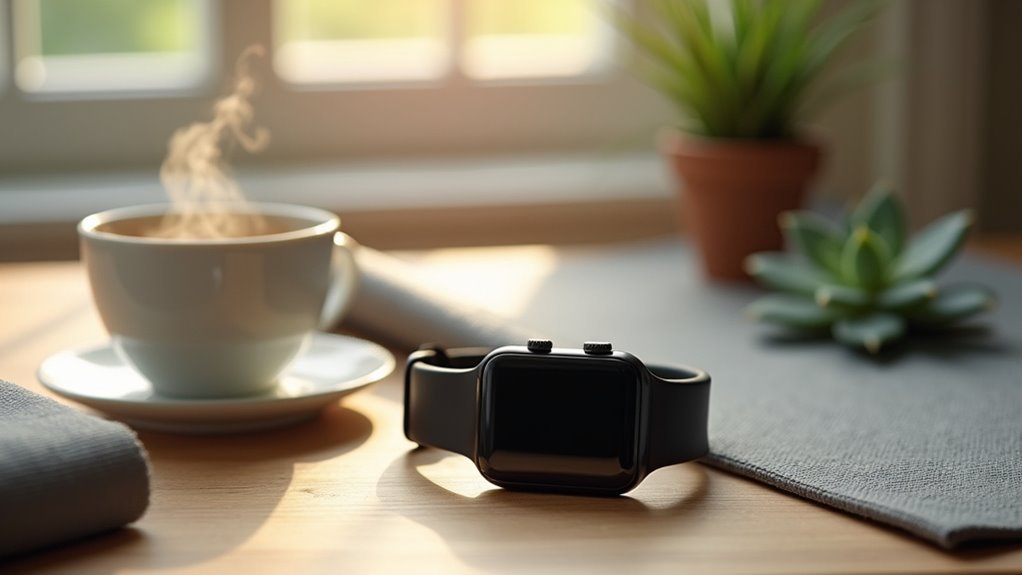
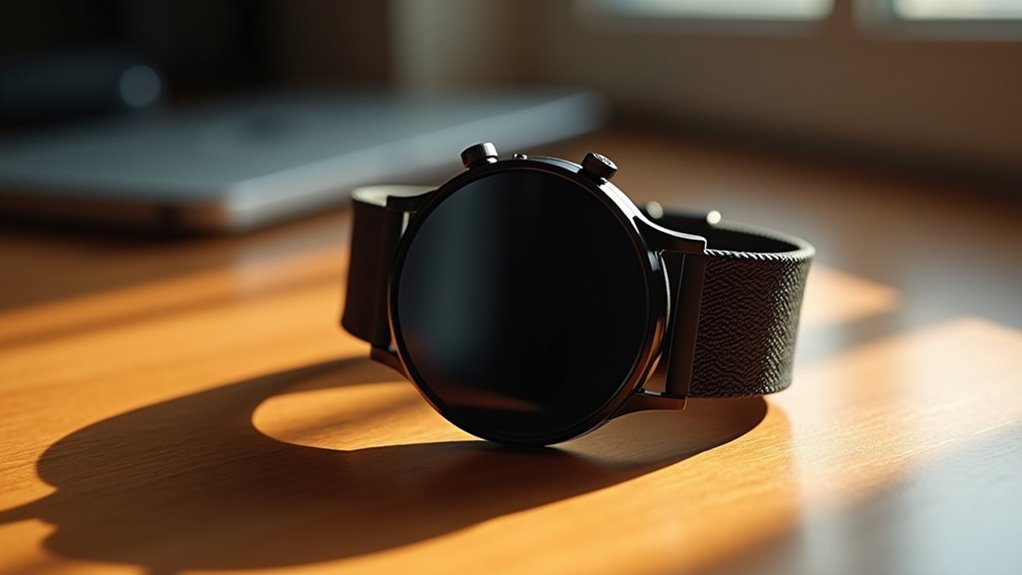
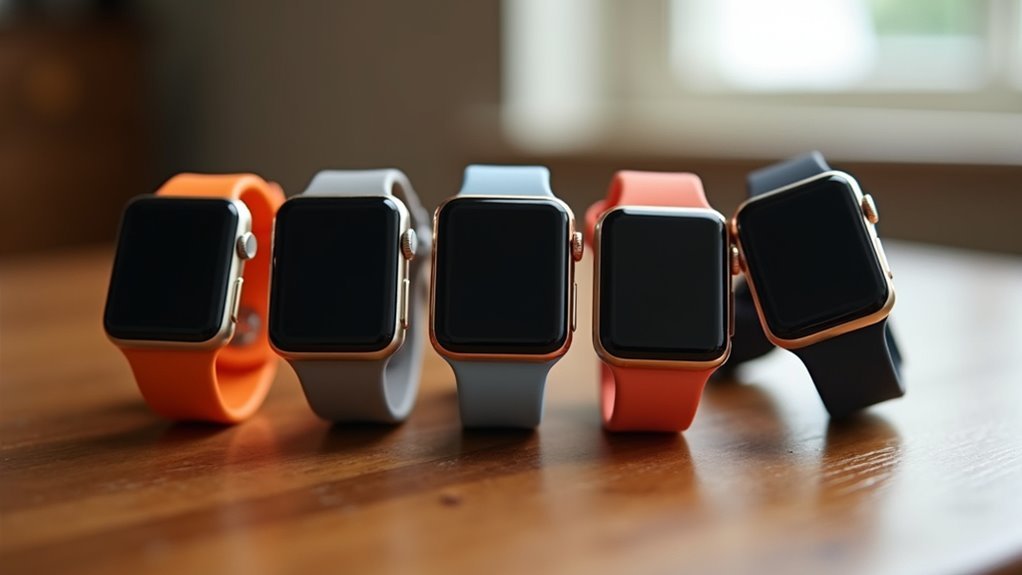
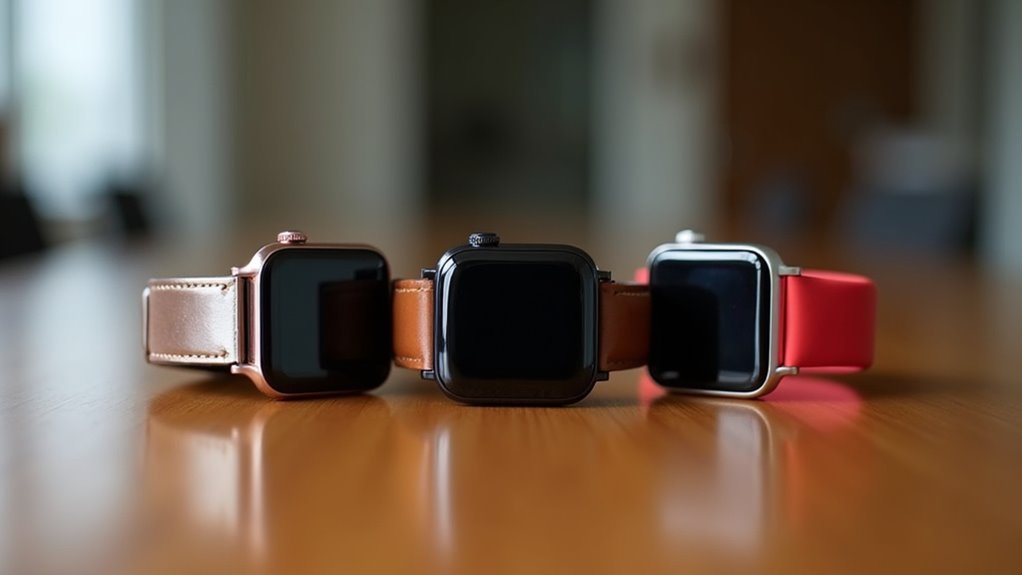
Leave a Reply